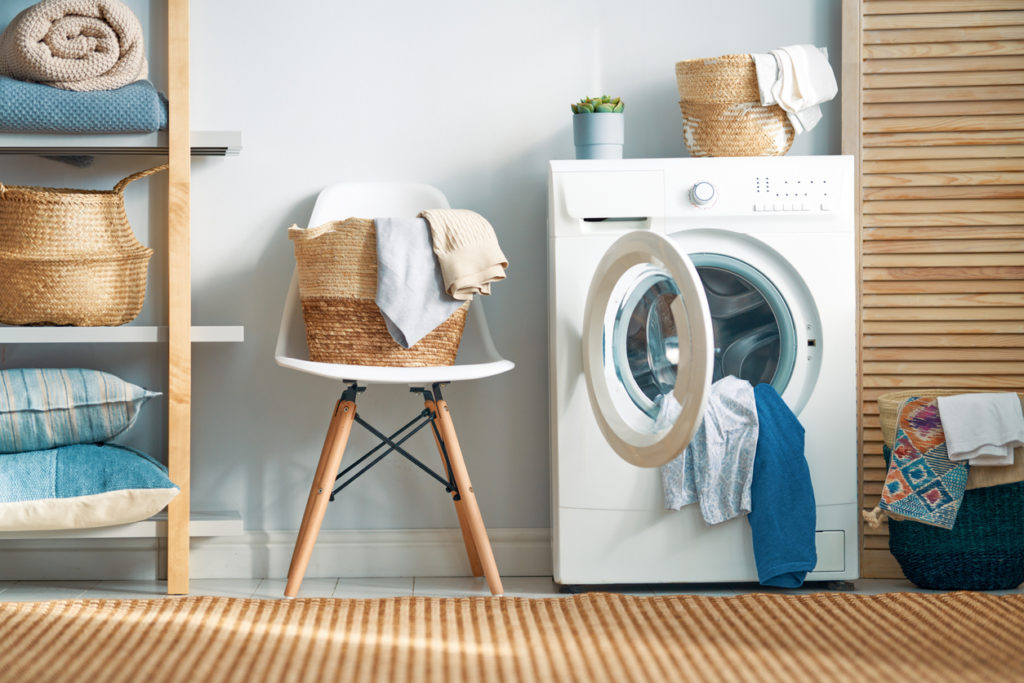Even if you don’t do laundry every day, you probably need to do at least one load per week. It’s safe to say that laundry is a regular part of most chore lists at home, and the dryer is an integral part of that process. Having a quality dryer on hand makes it simple to complete your laundry and have everything ready to put away in its proper place.
This blog post details features or aspects that make a typical dryer the right choice for your needs. You’ll also find some helpful dryer maintenance tips in order to care for this appliance and some possible fixes for scenarios where it might not be functioning properly.
Tips For Buying A Dryer
Even if you already have a dryer, you might be thinking it is time for an upgrade. Dryer technology can change quickly to keep up with different demands or to become more efficient. If you don’t have a dryer yet, starting here can help you determine some of the models on the market today. We’ll go through some of the major features of the main types, as well as tips to buying a dryer, in order to help you get a sense of which kinds might be right for you.
Full-Size Dryers
The full-size dryers that you’ll find in most places tend to come in two main varieties: stacked or side-by-side.
- Side-by-Side: This is a common layout that you’ll see in many residential homes. A side-by-side setup has the dryer sitting to the right of the washing machine in almost all cases. This is because the door hinges on the appliances make this the most convenient layout. In these cases, you’ll also want to pair the dryer with a washer that loads from the front.
- Stacked: If you want to save some space on the floor or don’t care for washers that have the doors on the front, you can use a stacking kit to put your two full-size appliances atop one another. The only thing you’ll need to consider here is the height of the control panel and being able to reach all of the buttons easily. A variation of this sees a smaller dryer suspended above a washer that loads from the top.
Space-Saving Dryers
In addition to stacking units, you can go for compact dryers that are designed to fit into small spaces. If you don’t need to do large loads of laundry, or if you do smaller loads quite often, this space-saving measure might be right for your needs.
Dryer Maintenance Tips
This dryer maintenance tips section will cover some aspects related to dryer care. However, we’ll also include tips on how you might do laundry in ways that put minimal strain on the appliance. Keeping these tips in mind might help you avoid a malfunctioning machine.
- Keep the Vent Clear: There is a vent pipe on your dryer, and keeping it free from obstructions is one of the main dryer vent maintenance tips you’ll probably find professionals repeating over and over. If your clothing is taking longer to dry than it usually does, the vent pipe may be the issue. It’s a good idea to have the pipe checked yearly by a professional and cleaned to remove debris.
- Make Space Around the Dryer: Anything that might be flammable should be stored away from the dryer while it is in use. Further, don’t keep clothing piled on top of the dryer for too long as some of it might fall behind the unit. Items that fall in this area could damage the dryer and impede its function.
- The Lint Filter Is Your Friend: Most experts recommend not using the dryer at all if the lint filter is not secure first. This is a big part of most safety tips for dryers due to the hazards lint can pose. Lint that accumulates is one of the major causes of fires in dryers, and it can lead to costly repairs and other problems. Keep the lint filter in place, making sure to clean it after each load for best results.
Dryer Repair Tips
Even if you take great care of your dryer, it is an appliance with many parts. Some of those parts can malfunction over time. We’ve compiled a few handy dryer repair tips that might help you identify and solve a dryer maintenance issue when it arises.
- Check the Plug: Things could be as simple as making sure the plug is inserted into an outlet properly. While it may seem obvious, a plug behind the dryer can get jostled enough that it comes loose and fails to deliver power to the appliance.
- Inspect the Sensor: Dryers have a temperature sensor that helps them regulate heat for drying clothing without getting too overloaded. If your dryer is starting but shutting off after just a couple of minutes, the temperature sensor could be to blame. It’s actually a type of fuse that will trip in order to stop the dryer from overheating. A voltage meter can help you determine if this is the main problem.
The Dryer Wrap-Up
The world of dryers, and of laundry in general, is vast. However, you now have some specifics on the major types of dryers you’ll find, some of the most common maintenance issues they face, and tips of dryer repair if something goes wrong.
